We all have been there before when the gas light comes on in our car, and we're miles away from the nearest gas station. So to avoid anxiety in the future, how low should you let your gas tank go? Let's take a look at what professionals recommend.
For the health of your vehicle and to avoid being stranded, you shouldn't let your gas tank get below 1/4 of a tank. Doing so puts an immense amount of stress on the fuel pump.
However, if you get in the situation where your gas light comes on, most vehicles have 35-50 miles left before being out of gas.
No one wants to be on the side of the road with an empty gas tank. This article will discuss how long you can let your gas tank get. In addition, we will answer other frequently asked questions about fuel mileage and gas tanks, so read on!
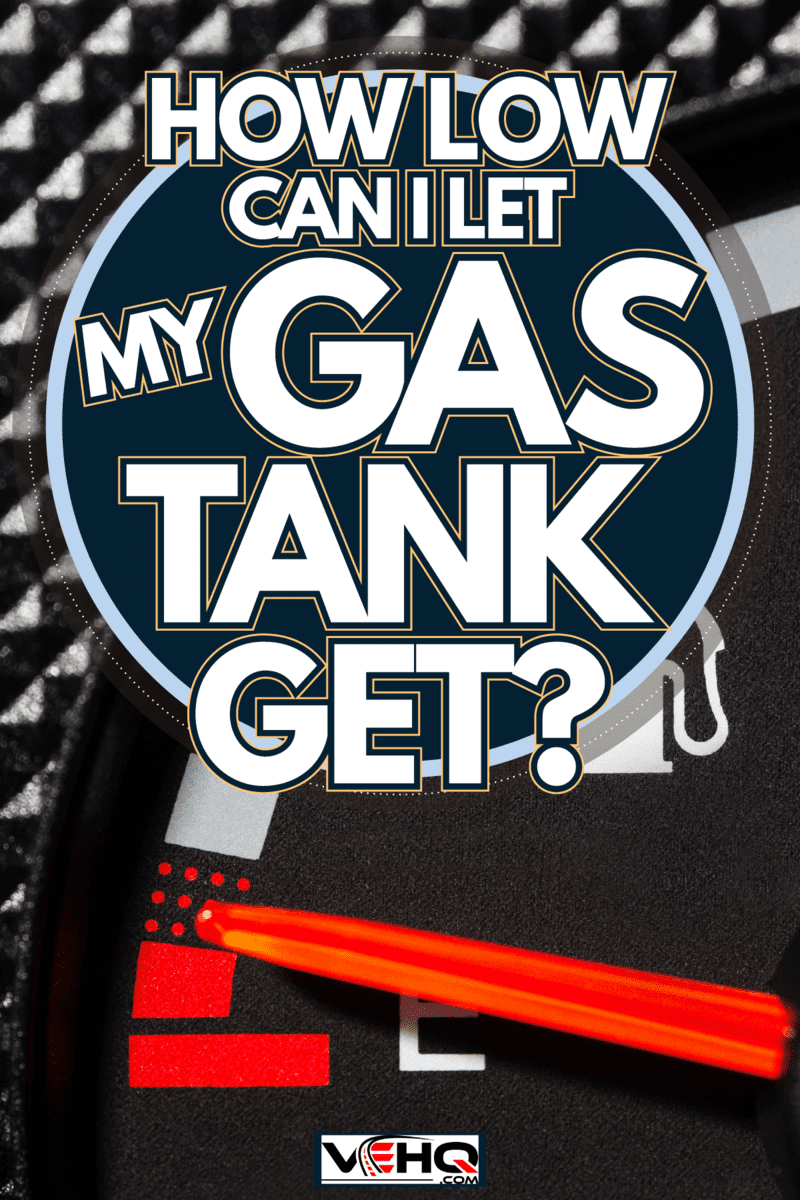
How Low Should I Let My Gas Go?
Life happens, and most people have found themselves in a situation where they've run out of gas. It's never fun, and it's always stressful. So you're asking, "how long can I drive on empty before my car breaks down?"
The answer to this question is different for every car. However, most vehicles have a reserve tank that holds 2-3 gallons (35-50 miles) of gasoline. Once the regular tank is out of gas, the car will run on reserve until that too is gone.
After the reserve tank is empty, the car will experience engine issues. First, the engine will run roughly and eventually stall out.
To avoid this, it is a good idea to fill up your vehicle every time it reaches 1/4 of a tank. This will help to extend the life of your car and avoid roadside troubles.
If you constantly run your tank below 1/4 of a tank, it will put unnecessary stress on the fuel pump. The fuel pump is responsible for delivering gasoline to the engine. When the tank is low, the fuel pump has to work harder and eventually fails.
A failed fuel pump is an expensive repair that could have been avoided by simply keeping your tank above 1/4 full.
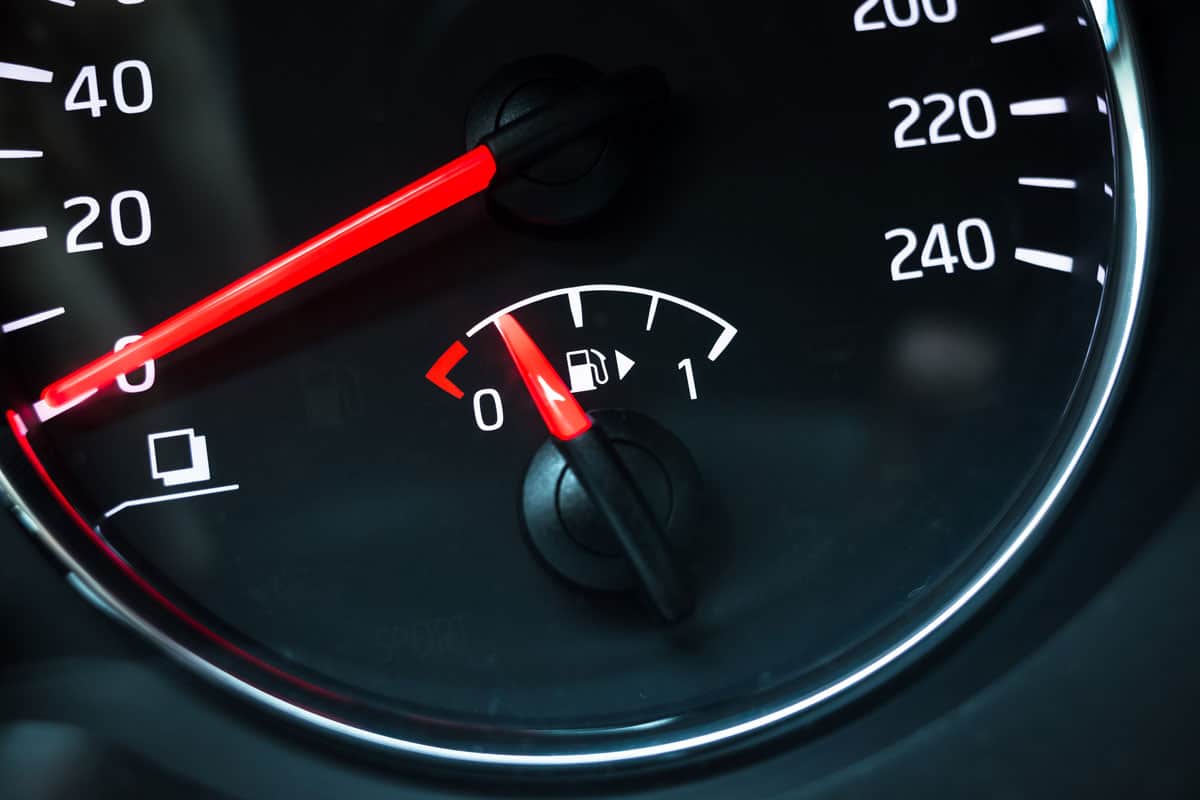
What Should You Do If The Low Fuel Light Is On?
If you find yourself in a bind and have to let your tank run low, there are a few tips to help prevent any damage to your vehicle.
Find A Gas Station
If your low fuel light comes on, the first action is to locate the nearest gas station. Once you know where the gas station is, you can plan your route.
Map Out Your Route
When you're low on fuel, it's best to take the most direct route to the gas station. This will help to minimize the amount of stress on your vehicle.
Avoid Driving Up Hills
If at all possible, avoid driving up hills. This will help to conserve the fuel that you have remaining.
Take It Easy On The Accelerator
Gentle acceleration is vital when driving with a low tank of gas. You want to avoid putting strain on the engine by flooring it every time the light turns green.
Accelerating quickly and driving at high speeds will only burn more fuel.
Use Cruise Control
If you drive on a highway or interstate, use cruise control. This will help keep your vehicle at a consistent speed and prevent you from accidentally going too fast.
If possible, set the cruise to 55-65mph, as this is the most fuel-efficient speed to travel.
Turn Off The A/C
The air conditioner in your car is powered by the alternator, which is powered by the engine. As a result, running your A/C when you are low on gas is bad.
It will strain the engine and cause you to use more fuel.
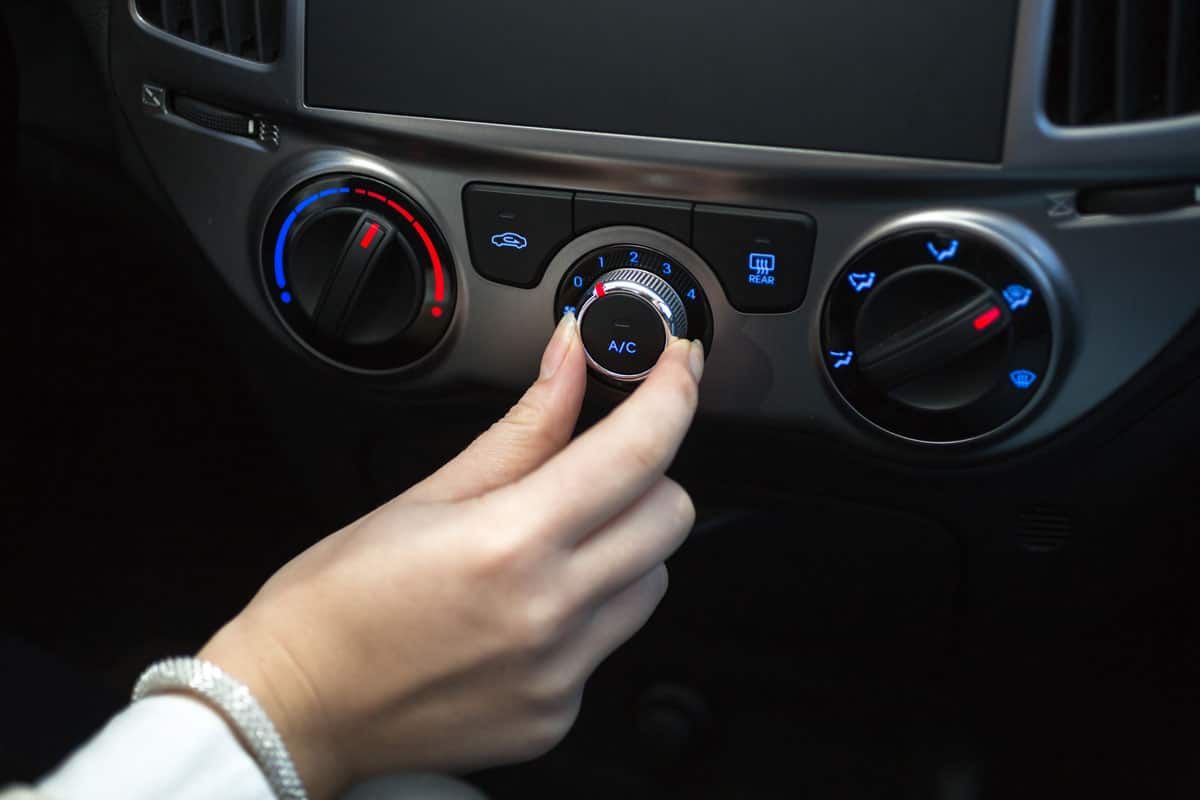
Turn Off All Electronics
Electronics such as the radio and GPS can also use up fuel. It may not be a lot, but when you need every ounce of fuel to get to the next station, it can make a difference.
Roll The Windows Up
It may be tempting to roll your windows down after turning off the A/C but avoid it. This is because the wind resistance caused by having your windows down will use up more fuel.
Instead, roll the windows up until you can make it to a gas station.
Drive Downhill (If Possible)
If you know the route to the gas station well, then take the route that has the most downhill. This will help your car to coast and use less fuel.
These are just a few tips to help you conserve gasoline and get to the next station without damaging your vehicle. If you run out of gas, keep reading as we'll cover what to do next.
What Should I Do If I Run Out Of Gas?
If you find yourself in a situation where you have run out of gas, don't panic. There are a few things you can do to get back on the road.
Call Roadside Assistance
Roadside assistance is a service that can come and help you if you have a flat tire, dead battery, or in this case, no gasoline.
If you have a membership with a roadside assistance service such as AAA, give them a call. They will be able to send someone out to help you within a few hours.
Get Gas From A Friend
Another option is to call a friend or family member and see if they can bring you a gas can. If you don't have a gas can, you can also use a plastic water bottle.
Make sure that the bottle is clean and that you rinse it out well. Once you have the gas, pour it into your tank, and you'll be on your way.
Walk To A Nearby Gas Station
You can always walk there and get a gas can if you're close to a gas station. This may not be the ideal situation, but it's better than being stranded on the side of the road.
Call A Taxi Or Uber
Another option is to call a taxi or Uber. This may be more expensive than getting gas from a friend, but it's still an option.
Just make sure to let the driver know that you need to get to a gas station so they can take the most direct route.
These are just a few tips on what to do if you find yourself stranded with no gasoline. If you consider these tips, you'll be able to get back on the road in no time.
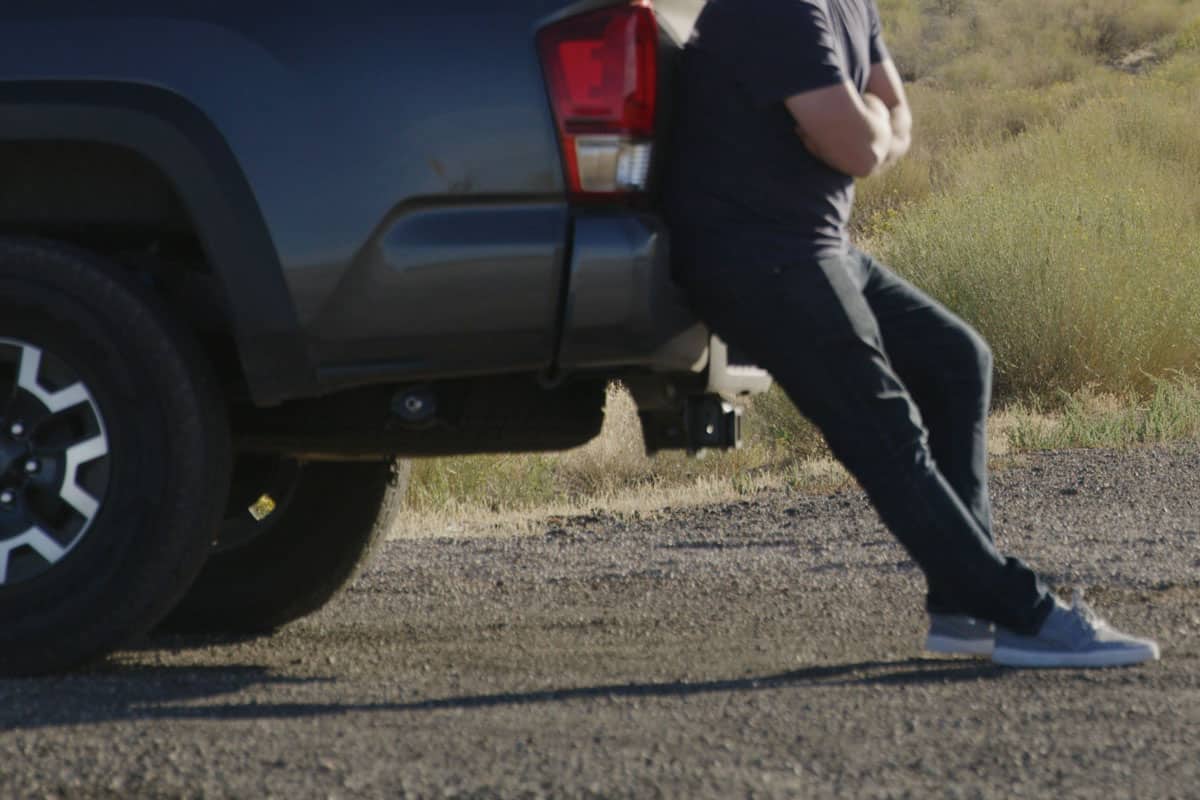
How Accurate Is My Car's Empty Distance Feature?
There is no definite answer to how accurate the empty distance feature is on a car's gas gauge. However, it is typically precise within 2%-6%.
While this may not seem like a big difference, it can be the difference between making it to the next gas station or being stranded on the side of the road.
If you are driving in an area with no gas stations for miles, it is always best to err on the side of caution and fill up your tank before it gets too low.
No one wants to become stranded on the side of the road, so it's better to be safe than sorry.
Furthermore, it doesn't hurt to always have an extra gas jug in your trunk just in case you do run out of gas. You can never be too prepared when it comes to things like this.
Does Having Low Fuel Damage A Car's Engine?
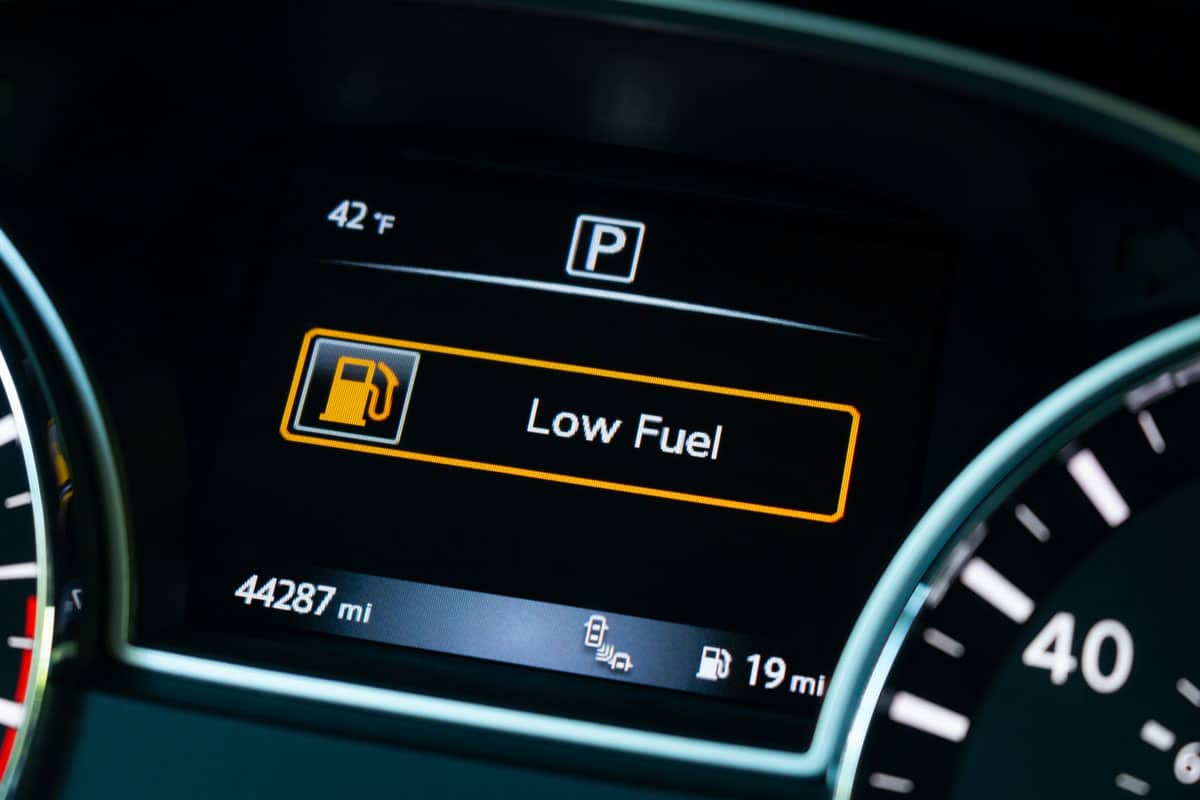
If dirt or debris gets into the fuel pump, it could be sent through the fuel injectors and into the engine.
This could cause a loss of power or stalling and long-term damage to the engine. Therefore, if you frequently drive with a low gas tank, it is best to have your car checked by a mechanic to ensure there isn't any damage.
It is especially problematic on vehicles with high mileage as the engine is already working harder than it was new.
Final Thoughts
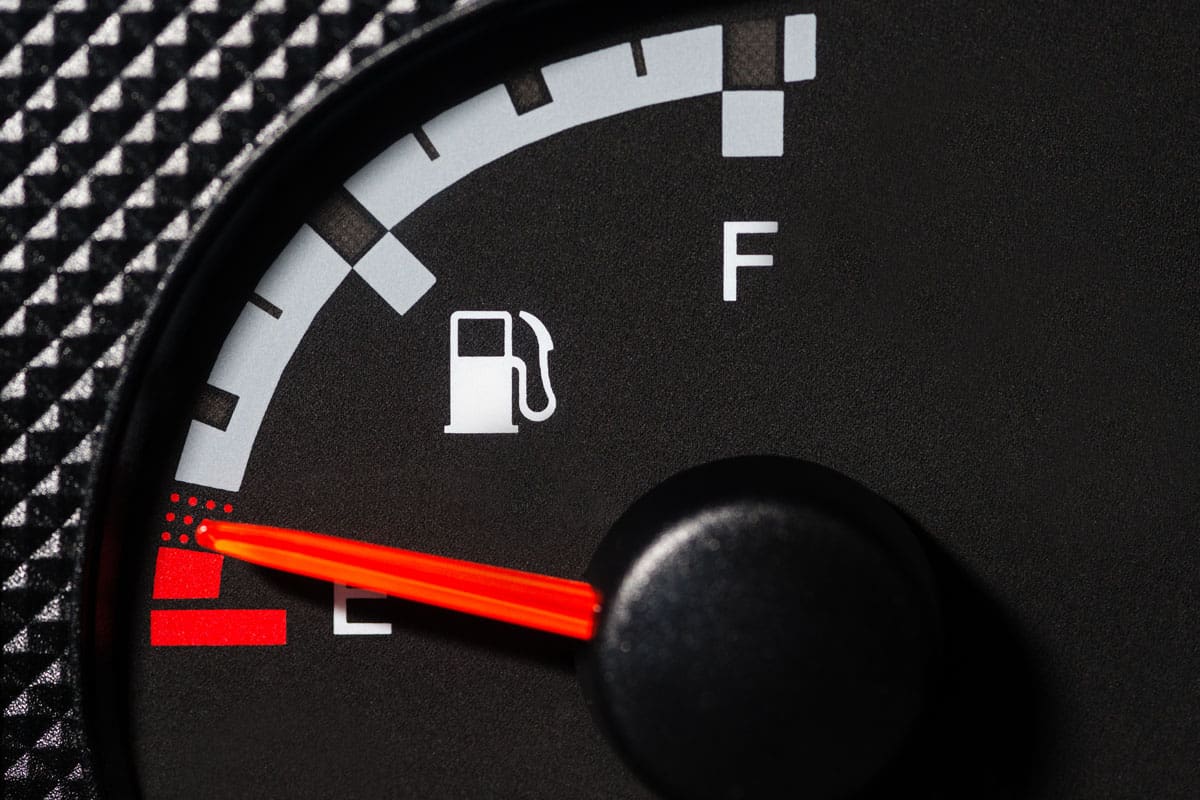
Overall, if you want to ensure you don't get stranded or ruin the fuel pump, it is best always to have at least a quarter gasoline tank.
This will give you plenty of time to get to the next station and top off your tank. However, if you find yourself in a pickle, follow the tips in this article to inch your way to the nearest gas station.
Made it to the end? Check out these helpful related car posts below!
How Many Miles Left When Gas Light Comes On In A Chevy Silverado?
How To Open The Gas Tank On A Hyundai Tucson [In 4 Easy Steps!]
